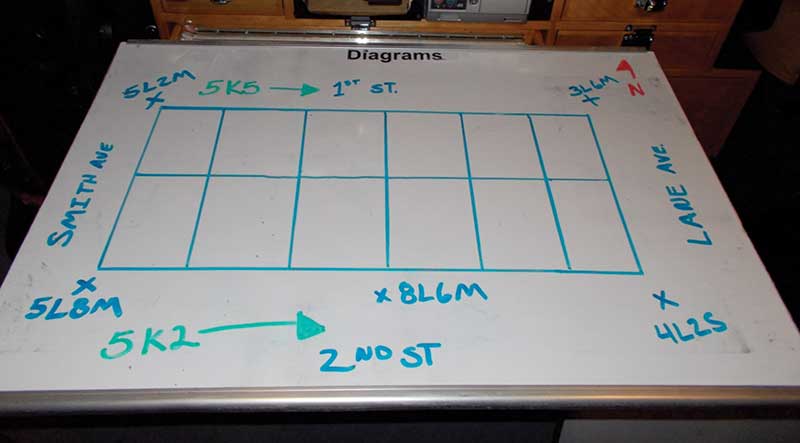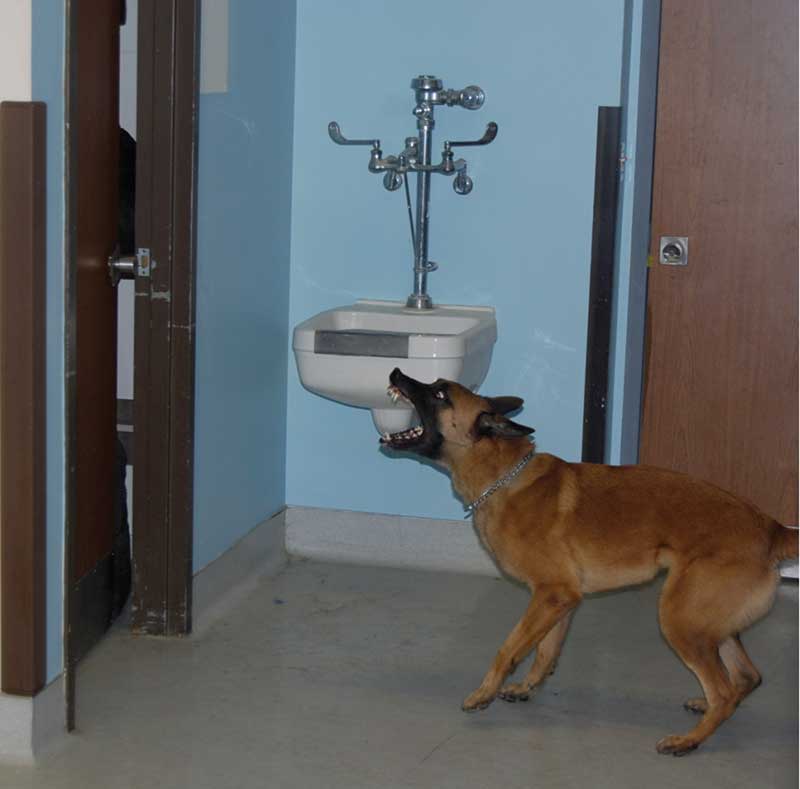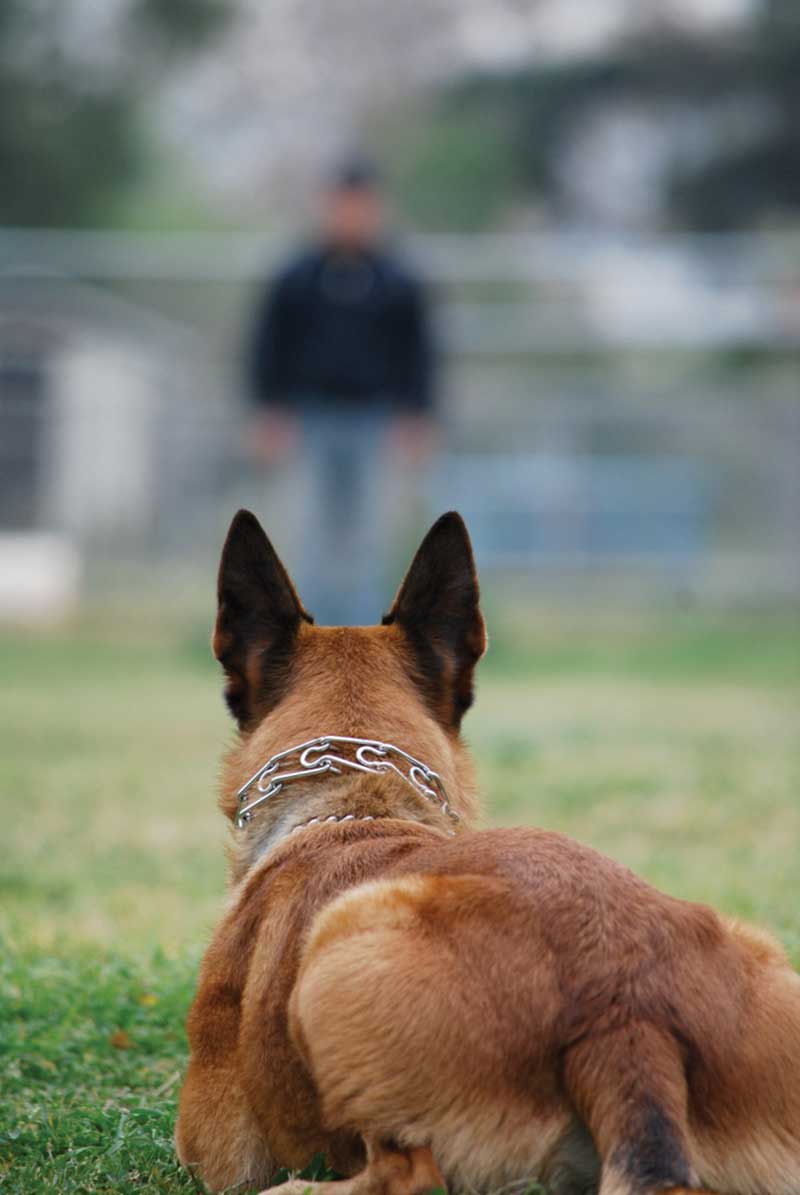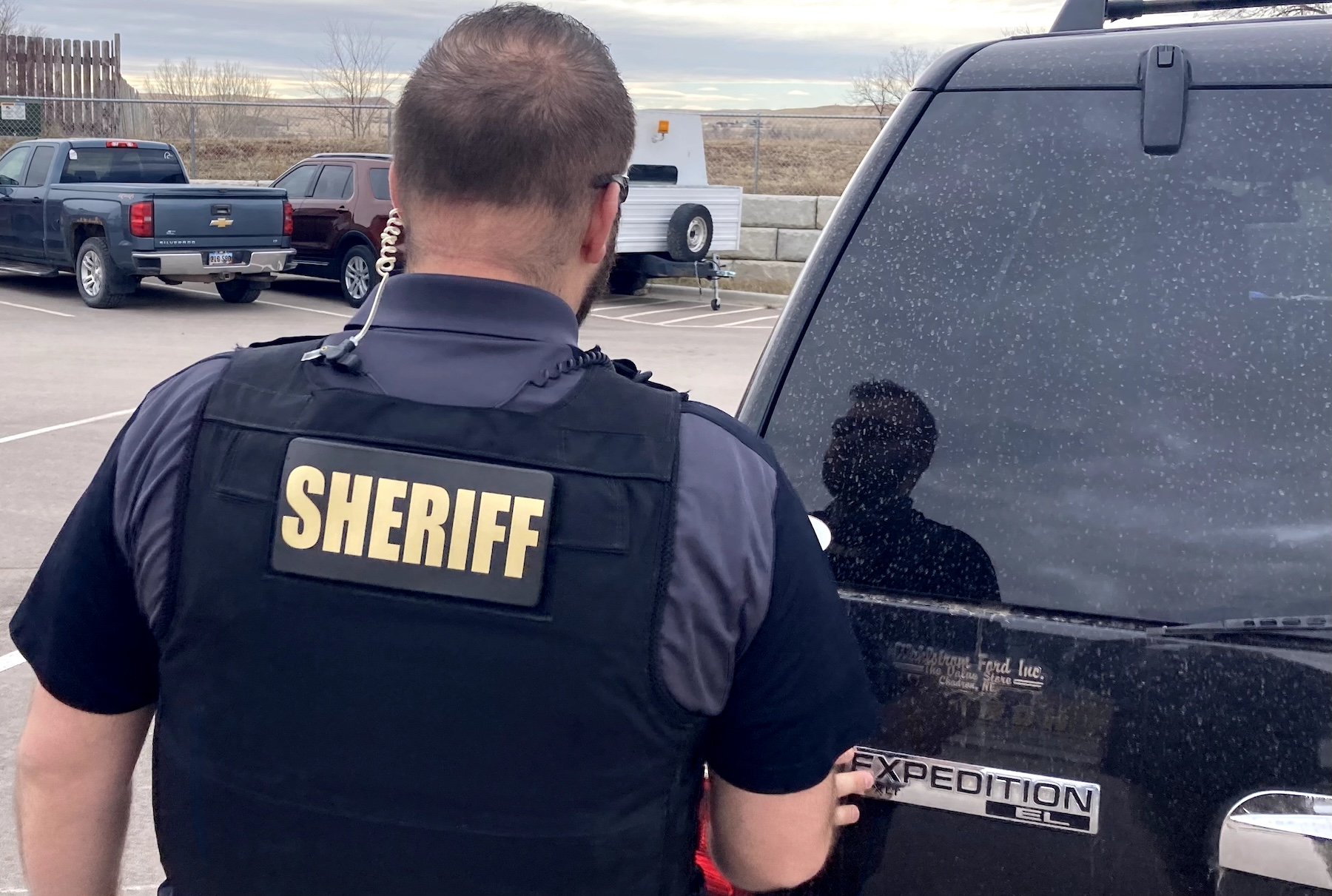
AC0913_k9_4-800
Working a CP doesn’t have to be overly complex, you just have to be organized. Having information you can quickly reference is critical to making good decisions.
Coordinating And Containment — Simplified
“All that it takes for evil to win in the world is for enough good men to do nothing.” Henry David Thoreau might not have been referencing command posts when he said that, but he could have been. Depending on who’s in charge, their level of experience, and how organized they are, command posts can range from a complete goat-rope to a well-oiled machine.
Seeing as how I’ve got the silver bars on my collar, the command post is the place I call home when the poo hits the fan. More often than not, that poo hitting the fan can result in that most common of patrol procedures, the K-9 search.
Personally, I love K-9s. Those little 4-legged varmints are a force multiplier like none other. They not only save us time, money and effort, they can locate, close with and put a hurting on the bad man before he can put a hurting on us. That being said they also need to be managed like any other asset. And that requires a K-9 command post.
STARTING
Like all command posts, situational awareness is the name of the game. If you can’t visualize what’s occurring with the forces you command, you’ll be unable to make timely, well-thought-out or even merely good, decisions. If you can’t make good decisions, you’re failing in your role as a leader. Like many of you, I don’t work at a large department. Depending on the time of night, I may only have four or five officers on duty. That can be a real challenge when you’re trying to set up containments and organize searches. Like most of you, we rely on mutual aid to fill in the holes.
Critical incidents are generally similar in how they begin, usually with lots of chaos. People are running, yelling, screaming, shooting, rolling code … the usual fun. Wildly exhilarating as all that may be, part of the job is to get control of all the craziness and start getting organized. The simplest way to start getting your CP organized is to declare yourself incident commander and announce your command post location over the air (OTA).

Even if all you have is a No. 2 pencil and a map book, you can make a command post work. But oh, to have a genuine mobile command post!
Try to pick a CP location outside the containment area and big enough to hold all the responding units. If the CP area has a bathroom, all the better. Then direct all responding units not directly involved in the problem to report to the CP. That includes your K-9 officers and search team members. I find it far easier to coordinate a K-9 search when the key leaders (your K-9 officers) are at the CP. That face-to-face contact helps ensure everyone is on the same page.
The next thing you need to do is start setting up your CP. Remember, your goal is situational awareness. Standing next to a patrol car, with a radio in your hand regurgitating what people are telling you on the air makes you a radio relay site, not a CP. Unless you’re blessed with a photographic memory, a CP requires you write information down, and, if possible, display it in some manner where you can easily reference it. Your ability to do so will depend on how much thought your department has put into that area of operations.
Many departments, sadly, have nothing but a radio and a No. 2 pencil to work with. Others have command post boards or — be still my heart — even full-blown command vehicles with digital display screens and integrated GPS tracking of all their units. Even a dedicated dispatcher! Whatever you have, it’s what you’ll have to work with, so learn to make the best of it.
WHICH WAY IS WHICH?
To begin with, I always orient my command post, or command post vehicle, facing north. I do this because all maps, whether hand drawn or computer generated, should have north oriented toward the top of the map. By orienting my CP and my maps in the same direction, I find it gives me a much better grasp of the relationship between forces on the ground, how they’re depicted on my map, and how they relate to the real world around me. If someone puts out the suspect is breaking our containment, running east, it’s much easier for me to look at my maps with me facing north, visualize east to my right, and understand the suspect is moving across my map, and the actual ground, in that direction. By being oriented to the real world, I’m able to shift forces, plug holes and respond more quickly to fast moving events. I also find it much easier to successfully brief additional resources, especially when they’re from outside the area, when they, the maps and the world around them are all oriented in the same direction.
WHERE IS EVERYONE?
The next task is figuring out every-body’s location. In order to fully under-stand the “big picture” you’ll need to draw a map of your containment (oriented north) and then plug in the call signs of all the containment units in their assigned positions. This can be done on a piece of paper, but I prefer a nice big whiteboard. I carry two white-boards and two tripod stands in my command vehicle for just such incidents.
I use the first whiteboard for my map and the second I get to the lead K-9 to list his search teams. That’s his area of expertise so, at least on my department, we let them sort out how and with whom they want to search. When they have a plan in place, they brief me. As long as it’s reasonable, and the vast majority of the time it is, I’m good with it.
Once the teams are drawn up and the plan briefed, one other bit of information I’ll put on my whiteboard is each K-9 team’s call sign and their direction of travel. This is just a quick and easy reference to help understand the movement of forces as the search progresses. While keeping track of two dogs on a parallel search is relatively simple, tracking half a dozen dogs on different tracks, in different directions, can be a challenge. It’s possible, even in a small city, to have anywhere from two to eight dog teams with cover officers from a multitude of jurisdictions, working together on one search. A simple call sign and arrow depicting their direction of travel does wonders in helping keep all of it straight.
With the usual mishmash of policies, procedures and techniques, this is another reason I like everyone, including the K-9s, to form up at the CP. Not only can we organize more effectively, it gives the incident commander a chance to brief everyone as to what has occurred, what is occurring and to lay out any concerns or expectations. Two items to always brief on: use plain English in radio transmissions (particularly helpful when mutual aid is working with you), and each search team use, as its primary call sign, the call sign of the K-9 on that team, and not its own department designator (i.e. everyone on “5 King 5’s” search team goes by the call sign “5 King 5”). This avoids the massive confusion arising if each person on that search team uses his or her own individual call signs.
KEEPING TRACK
It’s been my experience once a K-9 search kicks off that there’s a tendency for CP personnel to go into hibernation mode. The CP may be up and running, but it’s not really keeping track of where everybody actually is throughout the search. They “hear” addresses put out on the air as the search progresses, but they don’t truly “understand” in a geographical sense where that team is located. This becomes pertinent, and painfully obvious, when that poo we were discussing earlier catches a gust and finds itself launched once again into the oscillator.
This concept was recently high-lighted when one of our K-9 officers, taking part in a large search in a neighboring city, located an armed robbery suspect hiding in a wash- room. In the fuss that ensued, the K-9 officer quickly broadcast his call sign and “shots fired.” What were the first words out of the CP’s mouth at this surprise announcement? You guessed it, “What’s your location?” That should never happen! A K-9 command post must track every moving part in the operation, so if (when) things go wrong, they can quickly and effectively respond. Trying to figure out where everyone is after events have gone south makes you a day late and a dollar short in this game.
Fortunately, there’s a very simple way to track K-9 searches requiring little more than that No. 2 pencil. Most departments carry some type of map book or Thomas Guide to help figure out jurisdictional issues. If you don’t have one, then go buy one before your next containment. Once your hand- drawn containment map or whiteboard is finished, crack open the map book so you have a visual reference of all the actual addresses in the search area. We have a computer mapping system on our MDCs so, instead of a map book, I’ll pull up the digital map screen which has addresses overlaid on buildings. Despite the differences in technologies, both systems will work. I prefer the digital display due to its heads-up viewing, as well as the ability to toggle back and forth between maps and over-head satellite imagery.
Next, on a piece of paper, list your search teams (by K-9 call sign) in a horizontal column. As the search teams call out their search location, simply write that address under that team in a descending column. As they move along from property to property, you can easily follow the progress of the search. If sometime during the search you suddenly hear one of the K-9 teams calling out a contact or some emergency, you only have to look at the last address written to know where they are. You can then look at your digital display, or map book, and see exactly where the address is physically located. With your map board up, you can see which containment units are closest, or which available forces you want to move to sup-port the team in contact. The same rules apply if it’s one of your containment units who call out an issue.
While there are a variety of variations on this theme, as well as additional steps you can take to be even more effective, these simple procedures should serve you well when getting started on your own K-9 Command Posts.
Be safe — and never stop thinking.
Oh, and sharpen that No. 2 pencil.

















